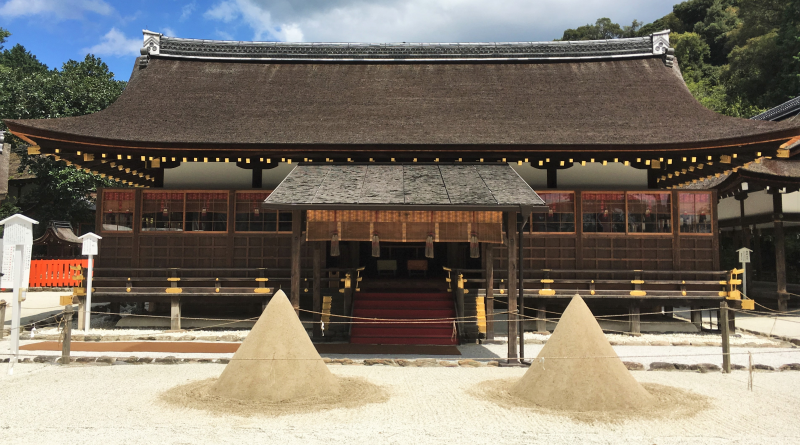
Kamigamo Shrine and the Ancient Gods of Kyoto
In north Kyoto is Kamigamo Shrine [上賀茂神社] , the head shrine in the Yamashiro region. Coupled with Shimogamo Shrine to the south, these shrines are the guardian shrines of the old capital. For many reasons this shrine is one of the most popular and important shrines in Kyoto.
The History of Kamigamo Shrine
Officially known as Kamowakeikazuchi Shrine [加茂別雷神社], Kamigamo Shrine, together with Shimogamo Shrine, enshrine the gods of the Kamo clan that once lived in this region. The main deity of Kamigamo Shrine is Kamowakeikazuchi no Ookami [加茂別雷大神] (henceforth Wakeikazuchi).According to the Yamashiro-koku Fudoki [山城国風土記],this god is so powerful that he can split thunder, as his name suggests (雷= thunder and 別=divide).
The Myth of Wakeikazuchi
When Princess Tamayori,who is enshrined in Shimogamo Shrine, was playing in the river, she found an arrow, which she picked up and brought home. Somehow, she then later conceived Wakeikazuchi.
One day, Wakeikazuchi’s father asked him for a cup of sake. Since his father had always been suspicious of the boy’s parentage he asked Wakeikazuchi, “Point to where you real father lives.” The boy then pointed to Mt. Koyama and flew into the sky, never to return. From that day forward, everybody knew his true father must be a god.
Later, hoping to see her dearest son, Tamayori received a vision that she could see him if she wove a crowns of hollyhock and held a festival on his honor.
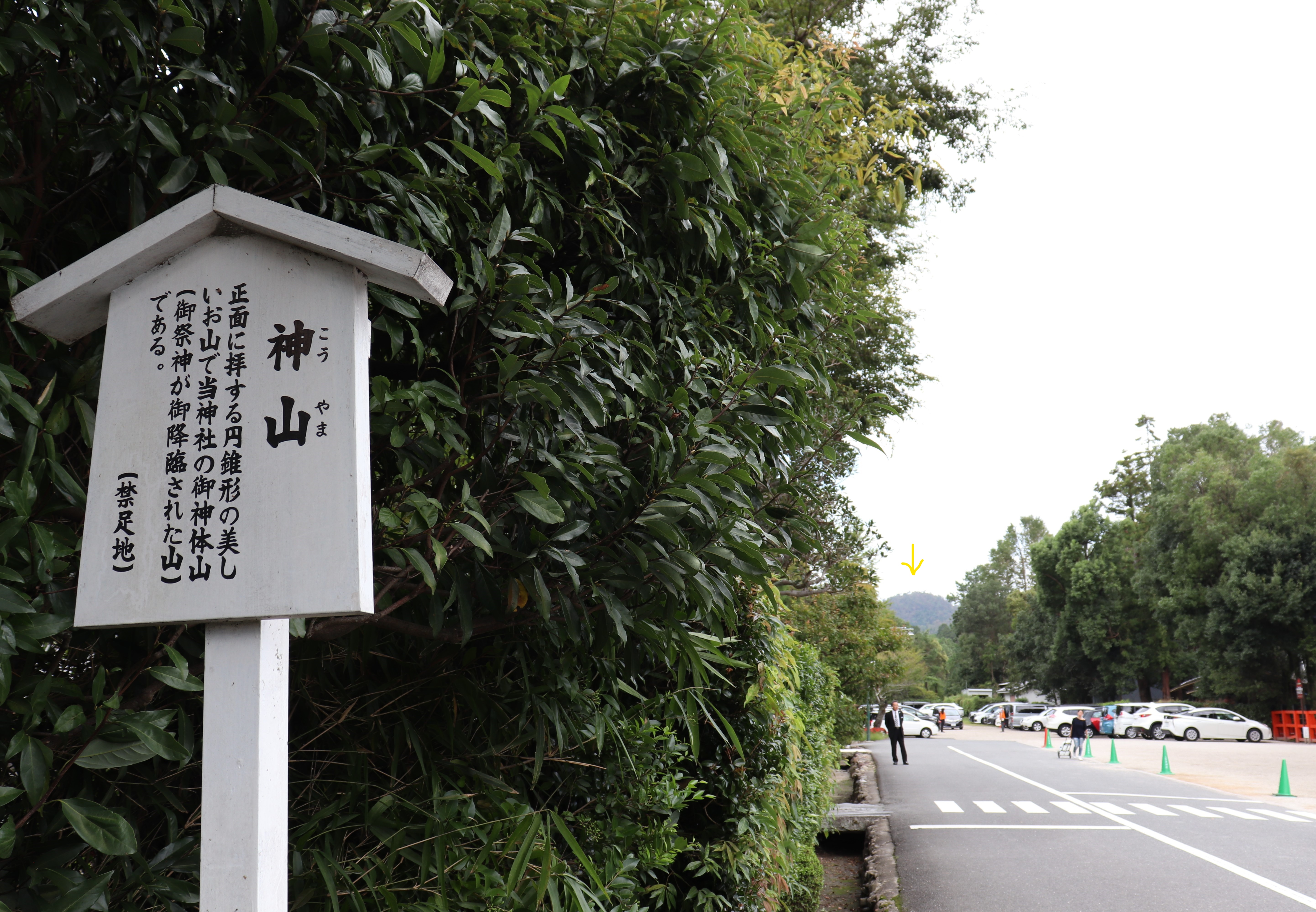
She followed these instructions, and Wakeikazuchi came down to Mt. Koyama. Soon after, in the 7th century, Kamigamo Shrine was made to enshrine this mountain.
Shrine Grounds
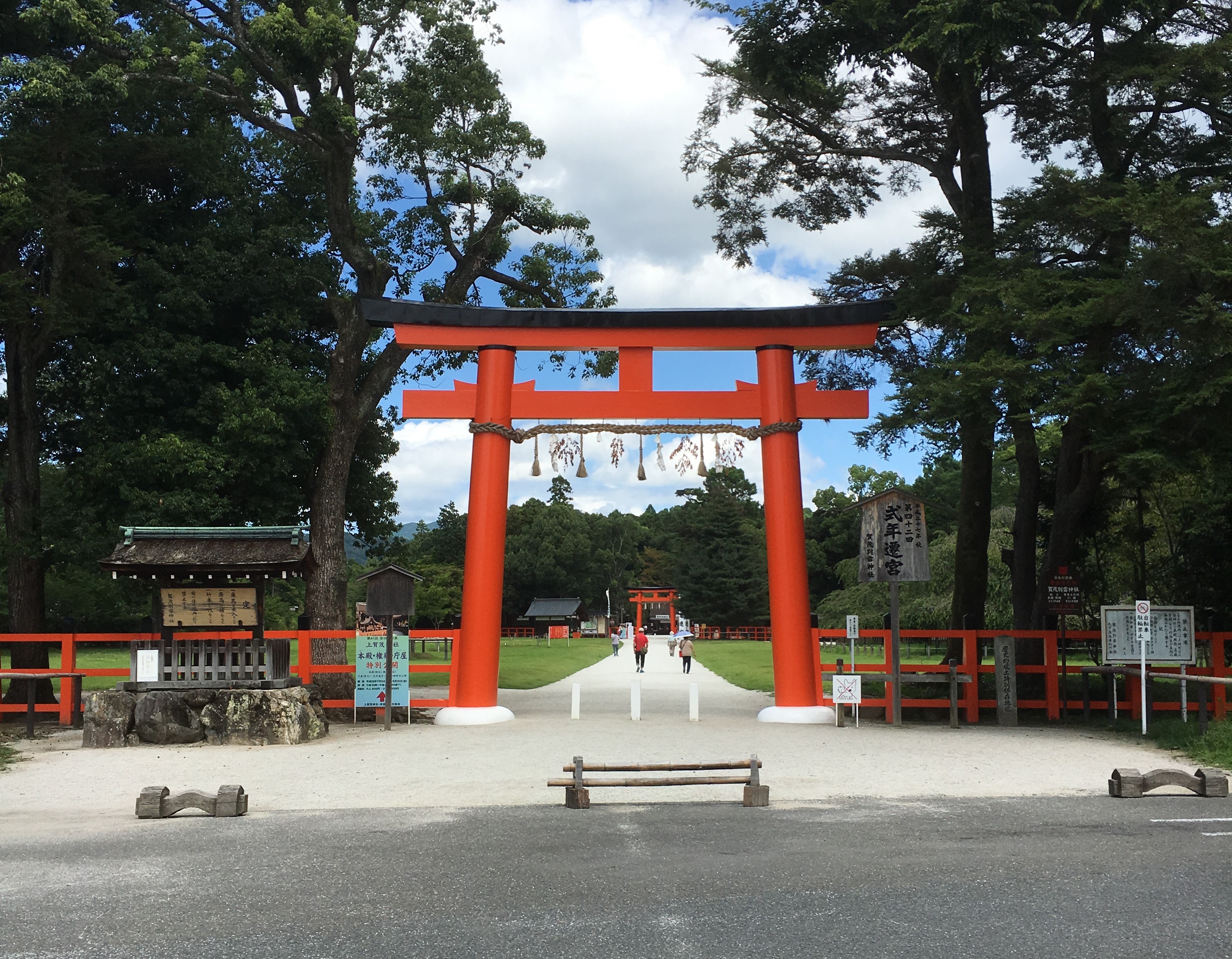
Near the entrance of the shrine is a small stream. This stream is part of a river system made of two rivers that flow along side of the shrine merge into the Nara no Ogawa. Nara no Ogawa then flows into Kamo-gawa River. The sounds of river flowing will certainly make you refreshed!!

In front of the Saiden, are two mounds of sand mountains called “Tatetzuna”, which represent the scared mountain, Mt. Koyama. Interestingly, on top of the Tatezuna are pine needles, but the reason is unclear…
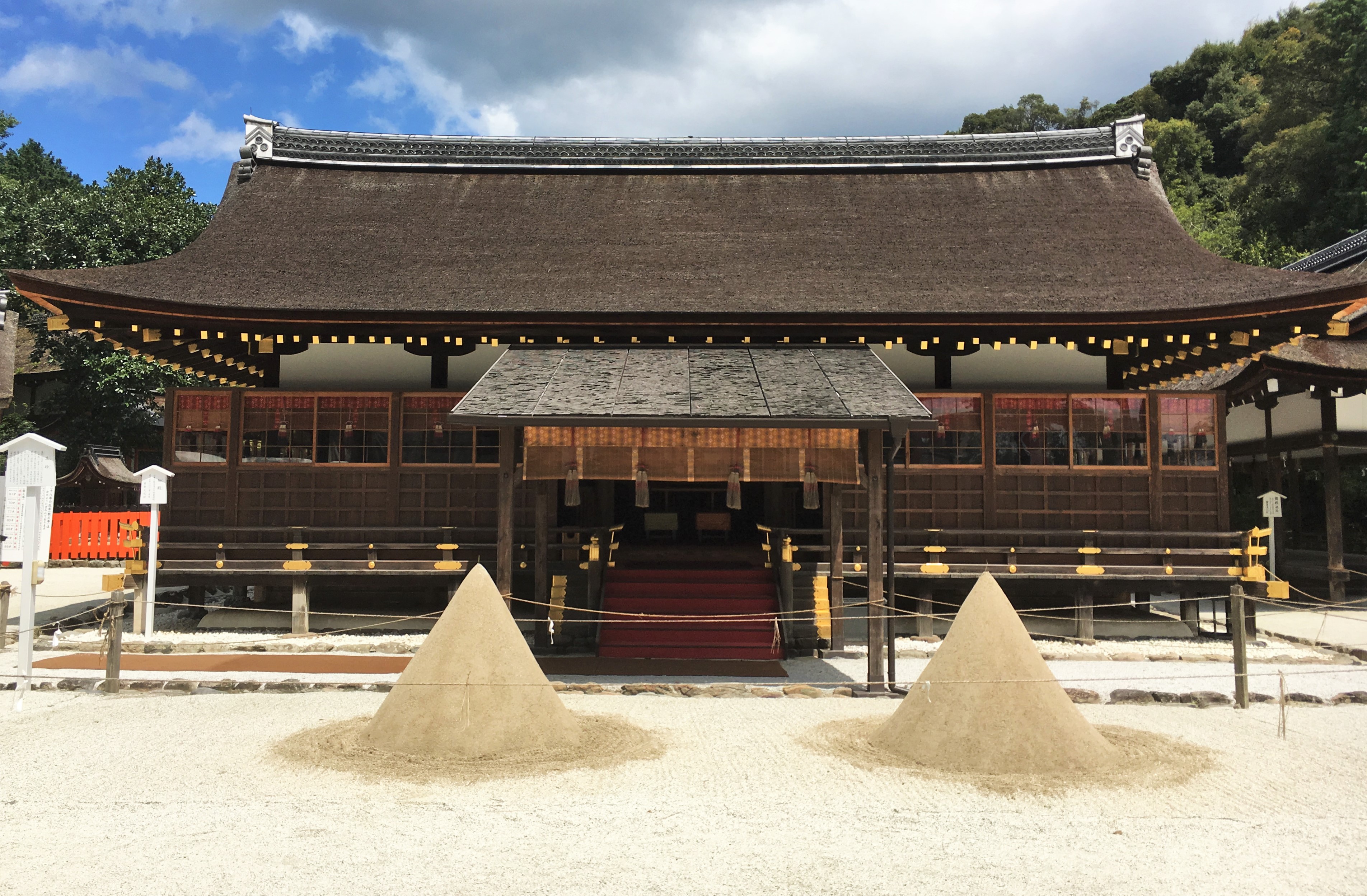
Once you pass the Saiden, then you will see Romon Gate and Kusu Bridge.

After Romon Gate, you will see the takakuraden and behind it the honden, the main shrine building. Many people pray here but you can get close to the honden if you pay 500 yen. Unfortunately we didn’t have time to participate the tour as we planed togo Shimogamo Shrine after this…

There are two building behind Takakura-den: Honden and Gonden. Honden is indeed for the main deity, Kamowakeikazuchi, and Gonden is for when Honden is not available. Traditionally, Kamigamo Shrineis underwent a process known as sengu [遷宮], where all its major structures get rebuilt once every 20 years. However, because it is a Japanese National Treasure, now they only replace things like roofs and worn statues.
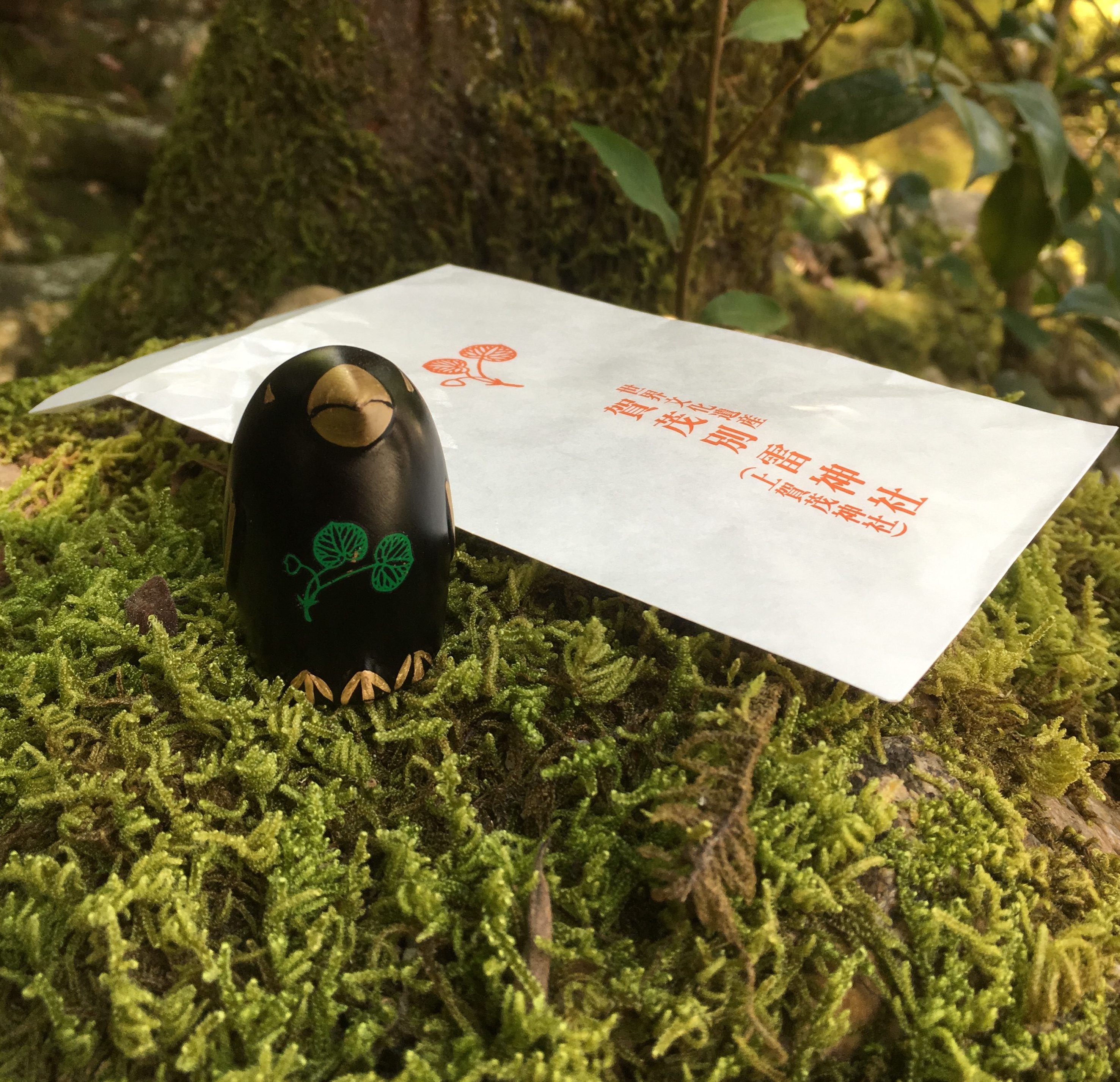
Points of Interest
Kataoka Shrine [片岡社]
Kataoka Shrine is a little shrine that enshrines Princess Tamayori, the mother of the main deity Kamowakeikazuchi.

Lady Murasaki, the author of The Tales of Genji, even visited this temple many times in hopes of finding true love. There, she recited the following poem:
「ほととぎす 声まつほどは 片岡の 森のしずくに たちやぬれまし」
[Hototogisu Koematsuhodo-wa Kataoka-no Mori-no shizuku-ni Tachiyanuremashi.]
“While waiting for the sound of the cock’s crow, I got drenched standing in the forest of Kataoka”
Because of this poem, Kataoka Shrine is very famous for finding true love.

Shake-machi
Around Kamigamo Shrine is home to Shake-machi, a collection of many traditional and unique Japanese houses, once the residence of many Shinto priests. used to live. Among those houses is Nishimura House, which is open to pubic (except in winter). If you want to see what the homes of these priests looked like, go in and take a look.


Kamigamo Shrine
| Address |
339 Motoyama, Kamigamo, Kita-ku, Kyoto City, Kyoto Prefecture
|
| Website |
http://www.kamigamojinja.jp/
|
| Getting To |
Since Kamigamo Shrine is located in the north most part of Kyoto city, it will take some time to get there. The easiest way is to take either the 4 or 46 Kyoto city bus. You can access these buses from the following stations: Kyoto, Kawaramachi, Kitayama, Shijo and Nijo. My recommendation is to take bus 4 from Kitayama Station, and it should only take about 15 minutes to the shrine. If you take a bus from Kyoto or Kawaramachi, it take entire an hour to Kamigamo Shrine, since both 4 and 46 run through the middle of the Kyoto City. Those buses will also make many stops, but if you use a bus from Kitayama Station, bus only makes one stop.
|
| Hours |
Mon-Sun: 5:30-17:00
|
| Admission |
Main shrine grounds: Free Inner shrine tour: 500 yen
|
| Note |
|
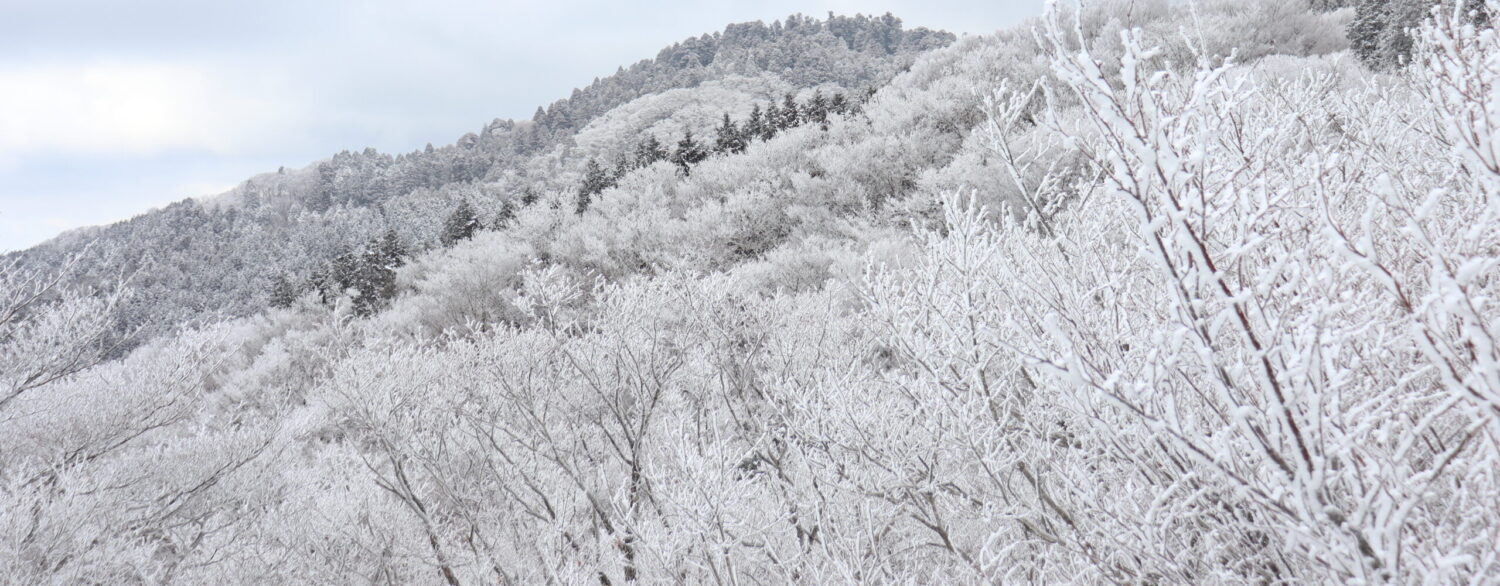
Leave a Reply